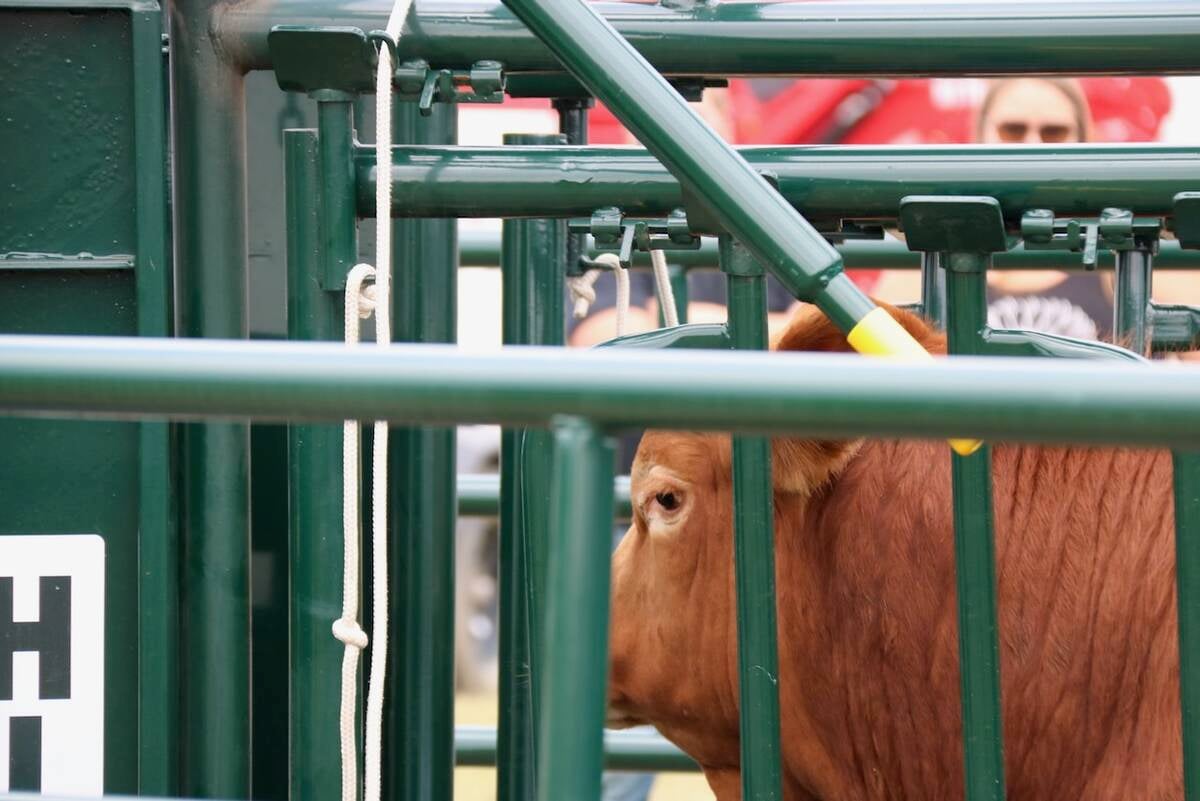Large-scale hog farmers have been blamed in recent years for generating excessive pig manure and for the increased levels of phosphorus in Lake Winnipeg and other water bodies.
But if Joe Ackerman’s project is successful, hog farmers might be able to change that image by removing excess phosphorus from manure and selling the nutrient at a profit.
Ackerman, a PhD candidate in biosystems engineering at the University of Manitoba, is developing a method to turn liquid hog manure into struvite – ammonium magnesium phosphate – and a slow release fertilizer widely used on golf courses.
Read Also

Good handling equipment a must on cattle operations
It’s important for the safety of producers and everyone else dealing with their stock that handling equipment is functional and safe.
A Vancouver-based company, Ostara, has developed large-scale technology to turn municipal waste water into struvite. But almost no one is working on converting pig manure into pellet fertilizer, Ackerman said.
“When you look at the scientific literature, you see that nobody does this, nobody has done it,” he said.
“(My) goal is to make this a simple process so every farmer can use it if they want to.”
Last summer, Ackerman set up a field experiment at a hog barn in southern Manitoba where he pumped waste water into 500 litre tanks from the barn’s lagoon. He then added an alkaline, potassium hydroxide, which raised the pH of the waste water to 8.5 and caused solids to settle out of the almost black waste water.
“I had this black, greyish sludge that I then dried. And I’ve analyzed that (material),” said Ackerman, who noted that the simple process removes a large chunk of phosphorus from the lagoon’s waste water.
“After 24 hours of settling, basically I got about 70 percent of total phosphorus removed.”
After drying the sludge, Ackerman was left with a product that was six percent total phosphorus, a little more than six percent nitrogen and almost four percent potassium.
“It’s in the infant stages as far as purity goes. … if it was pure struvite, it would have 12 or 13 percent phosphorus in the finished product. I’ve got half of that. So it’s not bad.”
This winter, Ackerman is working in a university lab to refine the process, but he’s an advocate for real life experimentation.
“I don’t like to be limited by lab stuff because if you do stuff in the lab it’s never the same as real life … everything’s different out there,” said Ackerman, who plans to continue his field work this summer.
What he’s accomplished so far has caught the attention of the Manitoba government. Last fall, the province’s conservation department awarded Ackerman a sustainable development scholarship and ARDI, the agriculture innovation arm of Manitoba Agriculture, is funding his phosphorus recovery research.
In addition to producing a fertilizer product that farmers can sell, Ackerman said it’s also important to re-duce the amount of phosphorus in hog manure.
Typically, hog manure is applied at a rate to meet the soil’s nitrogen requirements, he noted, not the phosphorus requirements.
“When you do that, because hog manure is so high in phosphorus, you’re over applying phosphorus according to the next year’s crop needs. … That leads to a build up of phosphorus in the soil.”
Don Flaten, U of M professor of soil science, said a large percentage of Manitoba’s agricultural land is actually short on phosphorus.
“Three quarters of our fields would be regarded as phosphourus deficient, agronomically,” said Flaten, who had a presentation on livestock and soil nutrients at Ag Days in Brandon last week.
But there are parts of southeastern Manitoba, such as the municipalities of Hanover and La Broquerie, where phosphorus buildup is a significant concern, Flaten added.
Asked if Manitoba’s moratorium on hog barn expansion is helping to mitigate the problem, Flaten said it’s unlikely that it made a difference because few farmers would have expanded their operations in the last couple of years.
Instead, Flaten said the key to nutrient management is focusing on the problem at the local level.















